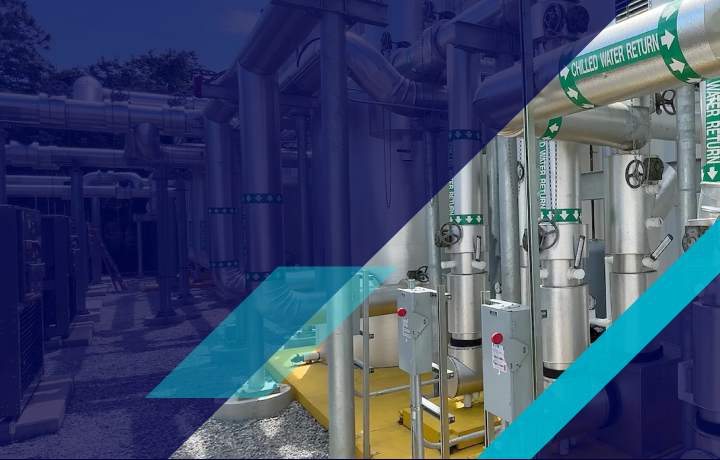Embracing edge computing: 7 strategic components of edge computing
The age of IoT and AI is quickly advancing, demanding more compute power and lower latency at the edge to ensure quick response and great performance.

If you’re a CEO, CTO, or CIO moving your enterprise toward edge computing, you’re not alone. The IMARC Group reports that the global edge computing market reached $18.3 billion in 2024 and is expected to grow to $114.4 billion by 2033, exhibiting a CAGR of 22.4% during 2025-2033. Those are impressive, cloud-like growth numbers. An IDC survey showed that 73% of enterprises view the edge as a strategic area of investment.
You’re likely aware by now of the benefits of—and virtual necessity for—an edge strategy. A global data tsunami is being fueled by everything as a service and IoT everywhere, with emerging 5G technology and a flood of mobile devices enabling all that connectivity. By enabling the deployment of data as close to the consumer as possible, edge computing has become indispensable to enterprises of all sizes. The benefits of edge computing include reduced bandwidth costs, improved data processing efficiency, and enhanced security and privacy, especially in environments with unreliable connectivity.
So, what does it mean to move to the edge? While there are plenty of academic analyses and opinions on the topic, what are the actionable steps involved in getting to the edge?
Read on for the seven components of an edge strategy. And remember—you don’t have to go it alone.
Understanding edge computing
Definition and history
Edge computing is a distributed computing paradigm that brings computation and data storage closer to the location where it is needed, improving response times and saving bandwidth. Unlike traditional cloud computing, which relies on centralized data centers, edge computing processes data locally on edge devices or edge servers. This approach reduces the need for data to travel back and forth to a central data center, thereby minimizing latency and enhancing real-time data processing capabilities.
Although the concept of edge computing has existed for years, it has gained significant traction recently due to the exponential growth of IoT devices and the increasing demand for real-time data processing. As more devices generate vast amounts of data, the need to process this data quickly and efficiently has become paramount, making edge computing an essential component of modern IT strategies.
Key features
Edge computing offers several key features that make it an attractive solution for businesses looking to enhance their data processing capabilities:
- Reduced latency: By processing data closer to its source, edge computing significantly reduces the latency associated with transmitting data to a central data center. This is crucial for applications that require immediate response times, such as autonomous vehicles and industrial automation.
- Improved security: Processing data locally on edge devices or edge servers reduces the risk of data breaches and cyber attacks. Sensitive data does not need to travel across the network to a central data center, thereby minimizing exposure to potential threats.
- Increased efficiency: Edge computing enables businesses to process data in real-time, leading to improved efficiency and productivity. This is particularly beneficial for applications that require instantaneous data analysis and decision-making.
- Cost savings: Edge computing can result in significant cost savings by reducing the need for extensive data transmission and central data center resources. By leveraging edge computing solutions, businesses can optimize their IT infrastructure and reduce operational expenses.
Edge computing enables businesses to process data locally, providing a robust and efficient solution for real-time data processing needs. As the volume of data generated by IoT devices continues to grow, the importance of edge computing will only increase.
Edge computing vs. cloud computing
Key differences
Edge computing and cloud computing are two distinct paradigms that offer different advantages and are suited to different use cases. Understanding their key differences is crucial for businesses looking to optimize their IT strategies:
- Location: The primary difference between edge computing and cloud computing lies in the location of data processing. Edge computing occurs at the edge of the network, closer to the source of the data, such as on edge devices or edge servers. In contrast, cloud computing relies on remote data centers to process and store data.
- Latency: Edge computing offers lower latency compared to cloud computing. Since data is processed locally, it does not need to travel to a central data center and back, resulting in faster response times. This makes edge computing ideal for applications that require real-time data processing.
- Security: Edge computing is generally more secure than cloud computing because data is processed locally and does not need to be transmitted over potentially insecure networks. This reduces the risk of data breaches and cyber attacks, making edge computing a preferred choice for sensitive applications.
- Scalability: Cloud computing excels in scalability, allowing businesses to handle large amounts of data and scale their resources up or down as needed. While edge computing provides immediate processing power at the source, it may not offer the same level of scalability as cloud computing, which can leverage vast centralized resources.
Edge computing is an important technology that enables businesses to process data locally, reducing latency and improving security. It is particularly useful for applications that require real-time data processing, such as IoT devices and autonomous vehicles. While cloud computing remains a popular choice for many businesses due to its scalability and resource availability, edge computing is becoming increasingly important as the amount of data generated by IoT devices continues to grow. By understanding the key differences between these paradigms, businesses can make informed decisions about how to best leverage both technologies to meet their specific needs.
The 7 seven components of an edge computing strategy
1. Develop service offerings that support edge deployments
The new edge landscape, driven by advancements in edge computing technology, is rife with possibilities for new revenue streams and increased competitiveness. Edge computing combined with IoT creates a compelling reason to create “premium” levels of service.
2. Utilize more near-edge data center deployments to manage data and traffic in-region
Skipping the roundtrip to the cloud reduces latency, enables faster response times, and lessens the chance of hazardous incidents along the way. Make smart decisions about which services to run locally using edge computing hardware and which to send to the cloud, and you’ll also reduce your overall IT costs.
3. Improve the connectivity capacity from the edge to the core
Tether those far-edge deployments, which are comprised of local edge data centers generally located at the base of cell towers, to high-quality, near-edge data centers within a comprehensive edge computing system. A robust interconnection strategy is key to a hybrid IT and edge strategy.
4. Deploy more services at the edge
Processing at the edge—within 10 milliseconds (ms) of the end user, device, or machine—enables the computing power and immediate response time needed for all things IoT, from automation, drones, gaming, online betting, smart cities, virtual reality, smart industry, agriculture, health, and self-driving vehicles. All need very low latency to be successful.
5. Define what needs to be managed at the edge devices
Make smart decisions about what edge hardware is managed at the edge and what is delivered to the core data center or cloud. The closer you place processing and data, the more agile your organization becomes.
6. Drop and dump non-critical data at the edge by processing data locally
Decisions on what data needs to be dumped, transported for later analysis, or acted on immediately need to happen at the edge. Fog computing addresses challenges related to bandwidth, latency, and congestion by deploying resources throughout expansive physical areas. This is vital for industries like healthcare and self-driving cars or even video surveillance, where milliseconds can make the difference between life and death.
7. Take action on critical data
Deliver to the core only that data that requires deep analysis, long-term storage, or high security, leveraging edge computing systems to optimize performance and efficiency. These are costly to distribute, so core data center deployments will remain relevant.
Define your hybrid IT and edge strategies with a flexible approach. Edge is still being developed, and new advances in private and public 5G will change the landscape. New applications, Secure Access Service Edge (SASE) developments, and growing mobile content will also change our landscape. One size does not fit all, so be flexible but act fast.
As more and more data requires real-time analysis, enterprises of all sizes and industries will build on their existing cloud computing architecture to process and securely store more data at the edge.
Build your edge strategy, make smart decisions, and take action. Seek qualified partners, and don’t go at it alone.




